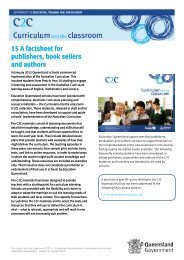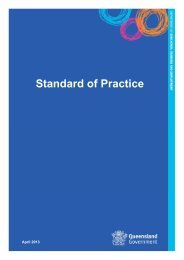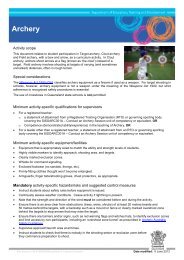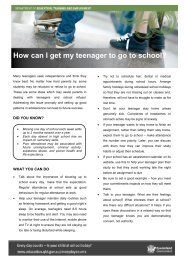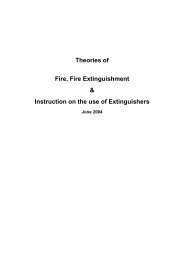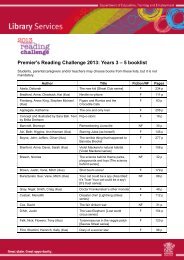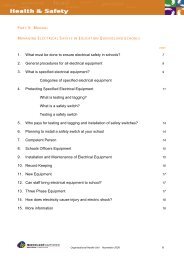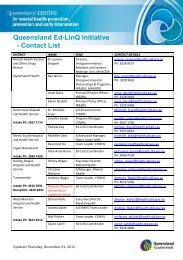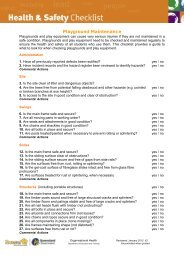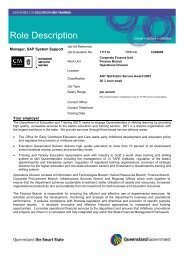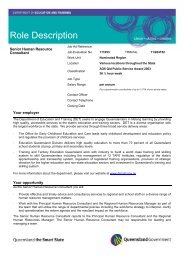Anaphylaxis guidelines for Queensland State Schools - Education ...
Anaphylaxis guidelines for Queensland State Schools - Education ...
Anaphylaxis guidelines for Queensland State Schools - Education ...
You also want an ePaper? Increase the reach of your titles
YUMPU automatically turns print PDFs into web optimized ePapers that Google loves.
6. Risk management<br />
Episodes of anaphylaxis are unpredictable and accidental exposure is a reality.<br />
There is no one rule <strong>for</strong> all schools or all students at risk of anaphylaxis.<br />
Where a student is known to be at risk of anaphylaxis, the principal is responsible <strong>for</strong> the health care<br />
management of this specialised health need. There are three stages in managing anaphylaxis in a school<br />
setting:<br />
1. Identifying the risks<br />
2. Minimising the risks<br />
3. Preparing <strong>for</strong> an emergency event.<br />
6.1 Identifying the risks<br />
When the school is notified that a student is at risk of anaphylaxis, the first step in managing the risk is to<br />
identify:<br />
• the student’s capabilities<br />
• the student’s allergic triggers<br />
• the level of anaphylaxis training provided to school staff<br />
• situations where there may be increased risk to the student.<br />
Student’s capabilities<br />
Young students or students with disability may require more targeted support. Older, more independent<br />
students are more likely to identify their own signs and symptoms of an anaphylactic emergency and raise<br />
the alarm. However, it is vital that school staff are aware of all students who are at risk of anaphylaxis and<br />
the school’s planning to support these students.<br />
Student’s allergic triggers<br />
Students may be potentially exposed to their allergens during school-based activities so it is vital to identify<br />
these triggers and their frequency in the environment as this will impact on curriculum activity planning.<br />
Some allergies such as drug allergies may have minimal impact on the daily operations of the school, so<br />
minimizing exposure may be personalised to the individual student (e.g. advising paramedics if the student<br />
is allergic to drugs in an emergency). However severe allergies to foods and insects, which are two of the<br />
most common causes of anaphylaxis, affect and may be affected by the whole school community, there<strong>for</strong>e<br />
planning will require whole-school strategies.<br />
As students can be allergic to several foods it is not possible, nor practical, to remove all food allergens<br />
from schools. Nor is it possible to remove all insects that students are allergic to. <strong>Schools</strong> can, however,<br />
implement strategies to reduce exposure to these allergens.<br />
It is important to know the severity of the student’s allergy and how quickly they are affected in order to plan<br />
the most effective emergency response.<br />
10 <strong>Anaphylaxis</strong> <strong>guidelines</strong> <strong>for</strong> <strong>Queensland</strong> state schools



